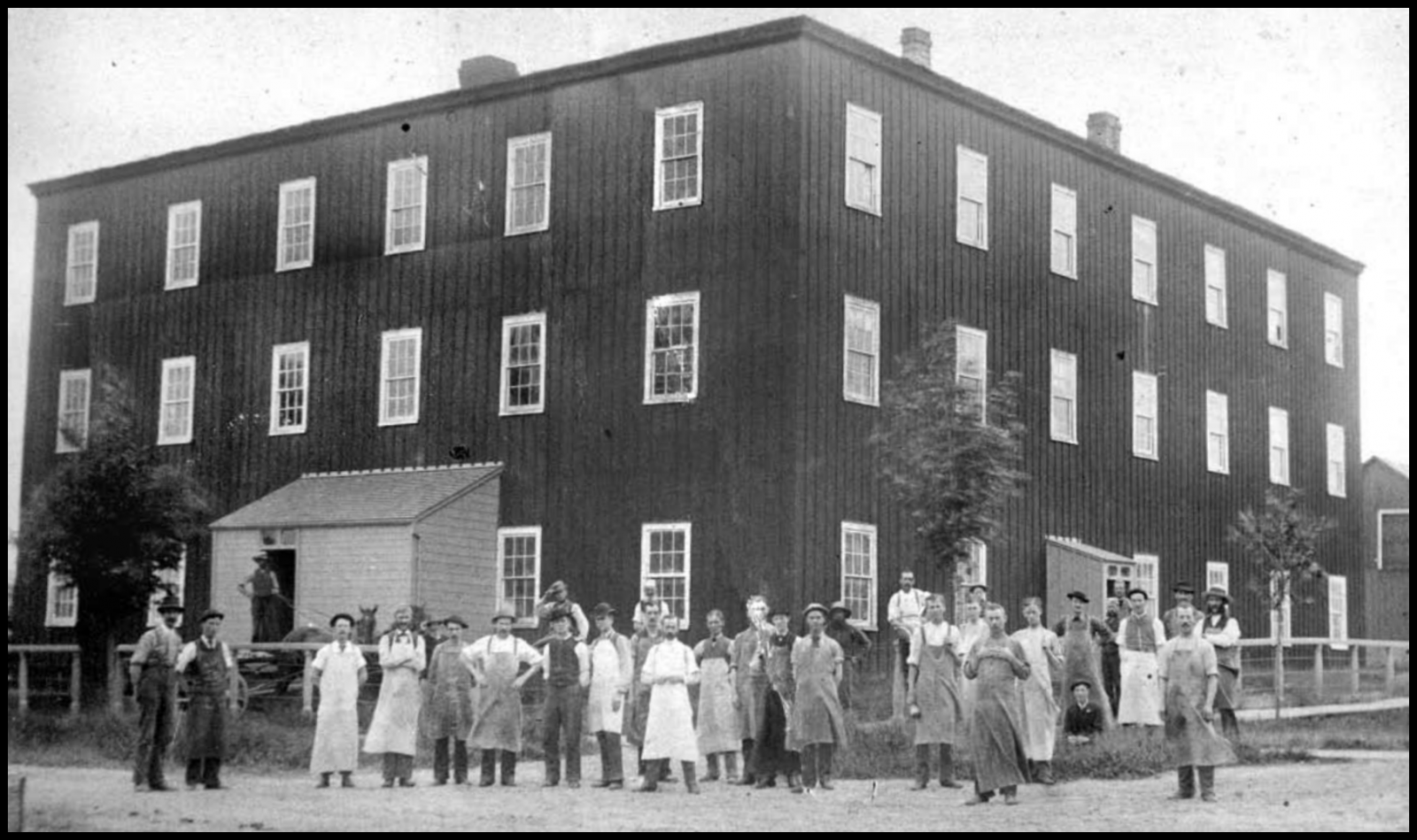Uxbridge Piano and Organ Company
Located at the corner of Brock Street East and Franklin Street

Uxbridge Cabinet and Organ Co. located at the corner of Brock Street W and Franklin Street- Photo courtesy of Uxbridge The First 100 Years by: J. Peter Hvidsten Page 86
The Beginning of the Uxbridge Piano and Organ Company
In the late 1850’s John and William McGuire, who were new to the country found their way to Uxbridge. After settling in they purchased some land south of the former fire hall on Bascom Street and constructed a factory to build cabinets and furniture. They got their lumber from a sawmill that they also built in Sandy Hook.
When the railway came to Uxbridge in the 1870’s it created a new market for products made in town. A few local business men, which included John and William McGuire, then decided to join together to form the Uxbridge Cabinet Organ Manufacturing Co. The group joined funds and purchased the business, supplies and machinery from John and William McGuire and then built a 3 storey factory at the corner of Brock Street East and Franklin Street (shown above).
The factory employed up to forty people and manufactured furniture, coffins and organs. According to the The Canadian Encyclopedia advertisements in 1878-9 offered reed organs in seven models at prices ranging from $200 to $355 and mentioned installations in central Ontario churches.
Expansion of the factory
A warehouse was built to the south of the building in 1877 to keep up with demand. They were now employing (at their peak) eighty to ninety people to manufacture enough organs. The demand for the organs continued and in 1883 an addition was then added and then in 1889 a new 3 storey brick factory was built to the south along Franklin Street (shown below).

The Uxbridge Cabinet and Organ Co. built the 3 storey building to the south of the original one in 1889 and moved the factory to its new location in the spring of 1890. The Photo courtesy of Tales from the Uxbridge Valley by: Allan McGillivray.

Here we see an organ made by the Uxbridge Cabinet Organ Manufacturing Company. This organ is on display in the Fifth Line United Church at the Uxbridge Historical Centre. Photo courtesy of the Uxbridge Historical Centre
John McGuire who was the manager of the factory retired in May of 1891 and with John Galloway started a furniture and undertaking business on Brock Street. The following year John passed away leaving his wife and son-in-law (William Low) to carry on the business. Now one of the longest family run business in town, Low’s Furniture is still on Brock Street and the Low and Low Funeral Home is located at 23 Main St S.
The End To The Pianos and Organs
In the spring of 1895 after some employees tried their best to keep the company going it finally went into liquidation. The company was then purchased by Mr. Small who managed to get the factory running properly again and then by 1897 he started shipping internationally.
The factory closed once again in 1905 after going through financial problems and was sold to John McQuires sons. The McQuire brothers did quite well selling instruments all over Canada until August 1907 when the original factory was lost to a fire. The fire also destroyed the roof and 3rd storey of the new factory taking many instruments still under construction with it. A month later some employees remained and put a new roof on the remaining building, added a kiln and started finishing pianos and organs that were saved from the fire. Pianos continued to be produced by fifteen employees under the direction of George McQuire until 1911 when production slowed down and the building was sold. This was the last time pianos and organs would be manufactured in Uxbridge.
Related Articles
After the fire in 1907 there was a second piano factory in Uxbridge. The Palmer Piano Factory built a factory by the railway just south of where the Co-op store was located (corner of Brock Street W and Victoria Dr).
Read about the Palmer Piano Factory
Read about the Uxbridge Co-op
Site of the Uxbridge Piano and Organ Company

This photo taken from a similar spot shows the former location of the factory. Now a used car lot and auto service centre. Just above the building and to the right you can see ‘Gleeholme’ as it is today.
Whats Left Today
The small addition that was added in the early 1900’s still exists today. It now has a shorter chimney and is covered in siding.


Acknowledgement and Sources
The Canadian Encyclopedia
Uxbridge The First 100 Years – By J. Peter Hvidsten
Uxbridge Historical Centre











 Facebook
Facebook
 X
X
 Pinterest
Pinterest
 Copy Link
Copy Link














































































